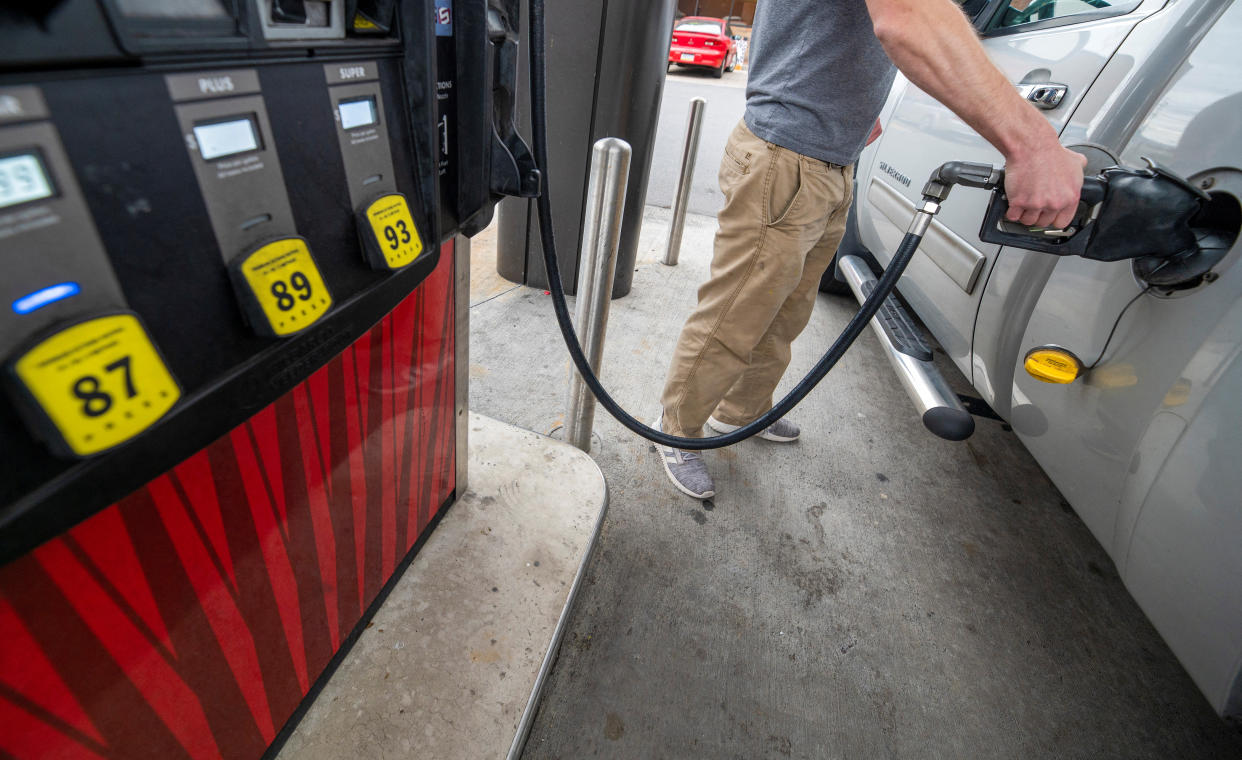Gas prices are falling even with oil nearing $90 a barrel — here's why
US crude oil futures have risen about 5% since the Israel-Hamas war started earlier this month, but that jump hasn't stopped the downward trend in gasoline prices.
The national average cost of retail gasoline sits at $3.58 per gallon, $0.10 less than a week ago, and $0.30 off from last month, according to AAA data. Even California, which has the highest average in the nation at $5.59 per gallon, has seen a $0.17 decline from exactly one week ago.
"Gas prices seasonally fall every autumn," Andrew Gross, spokesperson for AAA, told Yahoo Finance. "2023 is no exception."
The main reasons behind the fall decline is the switch to a less expensive winter blend driving fuel and lower seasonal demand.
"Gas prices will likely keep dropping until the end of the year," Gross said. "The one caveat would be if the new war expands to include oil-producing nations in the region."
Inventories roughly 10% higher than this time one year ago are also pressuring gasoline prices.
The current decline is notable given prices at the pump are about $0.30 lower than a year ago, when oil was hovering around the same levels as today.
"This year is very different from last year, because refined products supply has increased," Jeff Barron, senior petroleum markets analyst at the US Energy Information Administration, told Yahoo Finance. "Anything that adds product to the market is going to help bring down refinery margins."
And consumers may continue to enjoy lower prices in the months ahead.
"If current crude prices continue to do the cha-cha, and there are no events (fires, hurricanes, etc.), consumers can expect another 20 to 25 cents per gallon of downside for local gas prices," Tom Kloza, OPIS global head of energy analysis, told Yahoo Finance on Tuesday.
The US is also witnessing a weaker trend in fuel consumption following a 2023 high in prices reached in mid-September.
"Gasoline demand has been weak," said the EIA's Barron. "Depending on which week you’re looking at it’s actually fallen below 2020 levels."

Crude oil prices spiked last week amid fears the Israel-Hamas war could broaden to other countries — namely Iran — a key global oil producer.
Despite last week's gains, prices are still roughly 7% below their 2023 high reached on Sept. 28.
"Fundamentally...the crude market remains very healthy," Rebecca Babin, CIBC Private Wealth energy trader, told Yahoo Finance Live on Monday. "We are in a place where supply and demand are very closely balanced, if not in a slight deficit."
Oil surged in the third quarter of this year amid continued OPEC+ production cuts and unilateral reductions by Saudi Arabia, which are expected to continue through year-end.
"A lot of the view [on oil prices] hinges on what [OPEC+ does] next. I think they stand pat, and we continue to see crude trade really well supported in that low-$80s range," Babin said.
"[If] we get into the $90s we do start to worry about demand destruction, which I think is a very real thing."
Ines Ferre is a senior business reporter for Yahoo Finance. Follow her on Twitter at @ines_ferre.
Click here for in-depth analysis of the latest stock market news and events moving stock prices.
Read the latest financial and business news from Yahoo Finance
